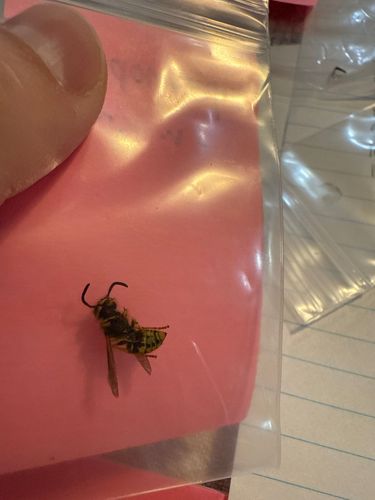Yellowjacket
Scientific Name: Vespula spp. or Dolichovespula spp.
Order & Family: Hymenoptera, Vespidae
Size: Typically 10-16 mm (0.4-0.6 inches) for workers, queens can be larger.

Natural Habitat
Yellowjackets are commonly found in a variety of habitats, including urban areas, suburban gardens, forests, parks, and agricultural fields. They often build nests underground in old rodent burrows, in tree cavities, or under eaves of buildings.
Diet & Feeding
Adult yellowjackets feed on nectar, fruit juices, and other sugary substances. They also prey on various insects and arthropods, such as flies, caterpillars, and spiders, which they chew up and feed to their larvae. The larvae, in turn, produce a sugary secretion that the adults consume.
Behavior Patterns
Yellowjackets are social insects living in colonies with a queen, workers, and drones. They are known for their aggressive defense of their nests, especially late in the season when colonies are large. They forage for food and water and construct nests from chewed wood fibers mixed with saliva, giving it a papery texture. Unlike bees, they can sting multiple times.
Risks & Benefits
Risks include painful stings, which can cause allergic reactions (anaphylaxis) in sensitive individuals. They can be a nuisance at picnics and outdoor gatherings due to their attraction to food and sweet drinks. Benefits include their role as predators of many pest insects, helping to control populations of caterpillars and flies, and some species act as pollinators, though less efficiently than bees.
Identified on: 10/12/2025